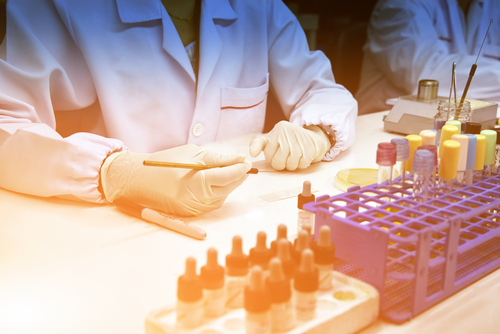Damaged Mitochondria May Drive Autoimmunity

Abnormalities in how mitochondria are “recycled” by cells could contribute to autoimmune diseases like Sjögren’s syndrome, a new study indicates.
The study, “IRGM1 links mitochondrial quality control to autoimmunity,” was published in Nature Immunology.
Often referred to as the “powerhouse of the cell,” mitochondria are cellular structures that play critical roles in energy generation, as well as in making various molecules necessary for cellular functions. Within mitochondria, there are nucleic acids — DNA and RNA — that are not found anywhere else in the cell.
When cellular components like mitochondria become damaged or defective, they can be “recycled” by cells through a process called autophagy, which literally means “self-eating.” When mitochondria are degraded by autophagy, the process is specifically referred to as mitophagy.
The gene IRGM plays important roles in normal autophagy and mitophagy. In prior research, scientists found that mice lacking IRGM1 (the mouse equivalent of the human IGRM gene) develop an autoimmune disease that appears similar to Sjögren’s syndrome, with characteristics such as increased inflammation in the tear and salivary glands.
In the new study, a team led by researchers at the National Institutes of Health performed a battery of cellular and biochemical experiments in order to better understand the mechanisms driving this autoimmune reaction.
“We speculated that if autophagy is deficient, then maybe autophagic clearance of mitochondria, called mitophagy, is also deficient,” Michael Fessler, MD, a co-author of the new study, said in a press release.
“If so, this might provide new hints into what happens in Sjögren’s syndrome,” added Fessler, who leads the Immunity, Inflammation, and Disease Laboratory at the National Institute of Environmental Health Sciences (NIEHS).
Through their experiments, the researcher demonstrated that the autoimmune reaction in IRGM1-deficient mice is driven by interferons — inflammatory signaling molecules that have a well-documented role in Sjögren’s syndrome and other autoimmune diseases.
“When we genetically blocked interferon in the IRGM1 knockout mouse, we cured the Sjogren’s-like autoimmune disease,” said Prashant Rai, PhD, a visiting fellow at NIEHS and co-author of the study.
Further experiments revealed that the lack of IRGM1 led to deficits in autophagy and mitophagy. As a result of these deficits, abnormal and damaged mitochondria accumulated within cells. Subsequently, the DNA and RNA that normally is found only in mitochondria was released into the cytosol (the liquid inside of the cell).
In healthy conditions, cells closely regulate where DNA and RNA are stored, because finding these nucleic acids in atypical places can be a sign that the cell is infected with a virus. That prompts the release of interferon to signal to the immune system there is a problem.
The researchers determined that, in cells lacking IGRM1, some of the same defense mechanisms get activated by the mitochondrial DNA and RNA (abbreviated mtDNA and mtRNA, respectively).
Notably, while different types of cells all produced interferons due to damaged mitochondria, the exact mechanisms differed in different cell types. Specifically, fibroblasts — a type of cell important for making structural proteins and wound healing — reacted primarily to mtDNA. By contrast, interferons in macrophages (a type of immune cell) were stimulated mainly by mtRNA.
“Both fibroblasts and macrophages made type 1 interferon, but the mechanism was different, suggesting that autoimmune diseases can affect different tissues in a selective manner,” Rai said.
A notable implication of this finding, according to the researchers, is that autoimmune research that has been validated in only one kind of tissue (for example, easily-collected blood samples) may not be reflective of changes in other parts of the body.
“Caution is warranted in developing therapeutics for systemic autoimmune disease that target single innate immune receptors … on the basis of pathways validated in select tissues such as blood,” the researchers wrote.
“These findings suggest that mtDNA and mtRNA may serve as an alarm system for failures in autophagic flux and that mitophagy — classically considered a housekeeping process — warrants much closer examination for its potentially fundamental roles in the programming of immune function,” the team concluded.






